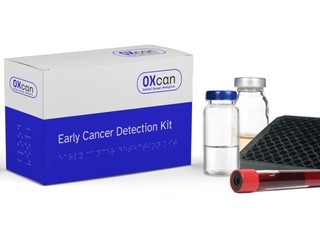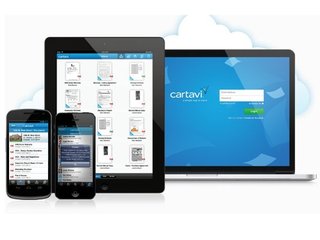
Paperwork. It’s something that, literally, not one single person I have ever met likes. And yet it is something that we know we can’t avoid. At some point, someone is going to send up a giant ream of documents requiring our signature.
Take my sister, for example. She just decided to buy herself a new apartment. Among all the other hassles and headaches that come along with that kind of decision (including dealing with lawyers and co-op boards) there is the paperwork. The unending paperwork. She complained to me about it for months!
But the end of those days are finally, and thankfully, in sight.
We are, of course, quickly moving toward an increasingly paperless world; one where all such documents will be handled online. And the company that is able to dominate that space will be sitting pretty for a long time to come.
DocuSign hopes to be that company. It has nearly 70% market share and more than 50 million users in 188 countries. And with more than 65,000 paying companies already signed up – it looks like it is well on its way there.
I recently spoke with DocuSign’s CEO Keith Krach, who will be a keynote speaker at our upcoming Vator Splash SF event October 8th, about his company, the value that brings to its customers and what the future holds for the company in the paperless world.
A little about DocuSign
Let’s begin by going over what DocuSign is all about.
It an e-signature transaction management company, whose goal is to help every global enterprise, business department, small to mid size business, individual professional and consumer to securely sign anything, anytime, anywhere, and on any device.
Founded in 2004, DocuSign has raised $125 million in four rounds of funding from investors that include the National Association of Realtors, Google Ventures, Scale Venture Partners, SAP Ventures, Salesforce, Comcast, Kleiner Perkins Caufield & Byers and Accel Partners.
In addition to its headquarters in San Francisco, DocuSign also has offices in Seattle, London, and throughout the United States. The company will soon be opening its doors in Sydney as well.
The company makes money with an SaaS model, where customers pay on reoccurring basis. The amount they pay is based on a number of factors, with pricing models based on how many people are using its software and the number of envelopes sent – both of which set the annual recurring revenue.
The value of DocuSign
The idea behind DocuSign is fairly simple: make signing important documents faster by cutting out the paperwork. But the real value is in the time, and the money, that the company saves its customers, Krach said, as well the security that it offers.
A financial firm Merrill Lynch, which is a DocuSign customer, has over 17,000 financial advisors, who have hundreds of customers each. And with each new client, there reams and ream of documents to be signed, he told me. There are new contracts, agreements to sign, transfer assets have to be signed. And this, of course, costs a lot of money to send via FedEx.
In addition, to the cost, there are added risks to sending documents in the mail. Customers often would not send them back, as they would be excited to sign in the moment, but would either start thinking about it too much, and start doubting themselves.
And, when do get them back, at least 20% of the time the documents are “not in good order,” said Krach. Either they are missing social security number, or someone signed in wrong place, or they forget to initial somewhere. On top of all of that, with paper based processes, someone has to rekey in all that data, which is a huge manual cost to business.
By sending the documents the right away – via DocuSign – companies are getting them back quickly, complete, and with a legally biding signature. The average business saves $20 to $50 per document by using DocuSign, he told me. That can add up to thousands, if not hundreds of millions, of dollars.
Security
One of the big hurdles for an industry like this is people feeling secure enough to send important documents, which contain sensitive information that they want to keep secure.
When I asked him how the company keeps these documents secure, he called this, “the beauty of DocuSign.”
“We encrypt the documents to the highest security standards,” he told me. “Even if the government said they wanted to see what was in them, we can’t do that.” Essentially DocuSign can’t see the contents of their customers’ documents. Customers themselves would have to provide the government access.
In addition, the company also keeps an audit trail on the back end, showing who signed what and when, along with all actions taken on the document.
Customers are given the “highest level of security,” he said, and that – as part of the company’s powerful platform – is what really separates DocuSign from all of its competitors.
“Others companies have a little app on the phone, but those are not secure,” he told me. “There’s no authentication, there’s no audit trail.”
The typical customer
DocuSign is used by a combination global enterprises, business departments, small to mid size businesses, individual professionals and consumers. Customers such as State Farm, Morgan Stanley, HP, Microsoft, Salesforce, McDonalds, Walmart – and Tesla all DocuSign. The company also counts 10 of the top 15 U.S. wealth management firms as customers, and 11 of the top 15 U.S. Insurance carriers.
The segments that Krach points to as one of its largest customer bases is real estate, as the company is the exclusive eSignature solution for members of the National Association of Realtors.
That is why DocuSign recently purchased real estate services provider Cartavi, which had previously partnered together.
Cartavi was already built on the DocuSign platform and was already integrated with DocuSign’s Web service and mobile apps. The acquisition followed an 18-month partnership in which DocuSign and Cartavi developed several joint solutions together.
“They are a leader in transaction management, and they help bring together buyers, seller, brokers, and agents,” said Krach. “It was a great combination of two industry leaders and it allowed us to broaden our platform.”
In addition, the two companies shared the same philosophy: mobile first.
Mobile is driving a big part of the company’s growth. A year ago less than 10% were transacting on mobile, now that number is 35%. And Krach expects 50% of all DocuSign transitions to be occurring on mobile by end of year.
As for other companies that DocuSign has been looking at, Krach would not comment on, except to say that there is “certainly a lot of opportunity” in other verticals.
While it can already count insurance as a big source of income, Krach sees healthcare as becoming another big customer very soon, especially with the Affordable Care Act about to go into law.
“Our business customers loves it,” Krach said. “They get mad when they go back to the old way.”
About Keith Krach
Krach has been chairman of DocuSign for four years, and CEO for two.
Prior to that, he founded three other companies, where heserved as CEO: Rasna Corporation, Ariba andinvestment holdings firm 3Points.
Rasna Corporation was acquired by Parametric Technology for $500 million, while Krach took Ariba public, achieving a market capitalization of $34 billion.
What did Krach take away from these experiences that he is now putting to good use at DocuSign?
“What I’ve learned is that the most important thing is the people on your team,” he told me. “l look at my job as building high performance team. The company with the best people wins, and this is the greatest team I’ve ever worked with.”
What does the future hold for DocuSign?
With all of the success that DocuSign is seeing, will the company be going public?
Krach would not answer the question directly, but did say that while he is “focusing on building a great sustaining company,” an IPO is a “possibility in the future.”
Right now, though, he sees DocuSign is standing on the precipice of a great opportunity.
“We believe that by the end of the decade the vast majority of signatures will be electronic. We also believe that all successful companies will be fully digital. Paper is the last place in a company that is not automated, so we see this as a huge disruption,” said Krach.
The value impact of eSignature is $10 million per year or more for larger and multi-national organizations based upon hard-dollar savings, productivity gains and revenue benefits.
“We see this as really changing the world, and as one of the biggest markets around. Every company is a potential customer, every department, every consumer. Our user base could be bigger than Facebook,” said Krach.
The last time that Gartner collected revenue data on the market, it found that the e-signature space was growing very quickly.
E-signature software and services grew 48% from 2010 to 2011, going from $111 to $164 million in the U.S. alone. Gartner also projected a similar amount of growth in 2012, which would have put it at $242.72 million.
If that growth rate applied again this year, it would be worth $359 million.
The market for e-signature software pales in comparison to the market that Facebook is facing, which is advertising. The total U.S. advertising market, which is Facebook’s bread and butter, was worth $158.3 billion in 2011, and $165 billion in 2012, according to an E-Marketer report from last month. They project that total spending will be $171.01 billion this year.
But if you add up all the costs that go into processing documents, from delivering them to paying people to manage them, to the actual paper itself, it adds up. If Krach is right that Fortune 500 companies could see a savings of $10 million a year, it wouldn’t be illogical for them to pay DocuSign half or 75% of that amount to eliminate those costs. Add those figures up and you’re talking about a $25 billion to $30 billion-dollar opportunity just targeting the Fortune 500 firms.
It’s a big market. And with DocuSign’s lead, it looks like it’s theirs to lose.
(Image source: http://www.businessinsider.com)
















